Results 3,801 to 3,810 of 12096
Thread: Anandtech News
-
04-15-14, 01:30 PM #3801
Anandtech: Scaling Windows - The DPI Arms Race
For several years now, device manufacturers have been in a race to push the pixel density of devices – primarily mobile devices – higher and higher. The race began with the iPhone 4 “Retina” display, an at the time impressive 330 pixels per inch (PPI) 960x480 3.5” display. Keen to trump the Retina moniker, makers of Android devices soon churned out devices with displays with PPIs of 440 and higher, with the current push to 2560x1440 displays in 5.5” or smaller sizes which yield an amazing 500+ PPI. We’ve seen a similar race in the tablet space, with 1280x800 soon giving way to 2560x1600 displays, but this time in a 7” to 10” form factor. Not wanting to be left out, Windows laptops and desktops are now starting to ship with high DPI displays. Unfortunately, Windows isn’t a simple matter of higher DPI being better; let’s discuss some of the history, problems, current solutions, and the future outlook for DPI scaling with Windows.
More...
-
04-16-14, 05:34 AM #3802
Anandtech: MSI GT70 Review: GTX 880M Edition
MSI has had the same core designs for several of their high-end laptops for at least a couple years now; specifically we’re talking about the GT60 and GT70 series. There have been updates and tweaks to the internal components, but the chassis remain largely the same as before – for better or for worse. The latest update brings NVIDIA’s new GTX 800M parts into the picture, and today we have the GT70 equipped with the top-of-the-line GTX 880M. What sort of performance increase does the new GPU bring, and what about Battery Boost? Read on for our full review.
More...
-
04-16-14, 10:00 AM #3803
Anandtech: Newegg Opens Business to the UK and Australia
As a consumer, more competition can be a good thing. Competition in manufacturing brings innovation and might help drive core pricing down, whereas competition in selling pits retailers against each other to see who will accept the lowest profit margin. In the US, Newegg is a big name when it comes to computer components and pre-built PCs, but also sells hand blenders, sporting goods and toys. It also allows third-party sellers to get in on the act, and as such you can navigate to Newegg to purchase a dust pan and brush.
For users outside the US, sometimes Newegg’s deals seem almost ridiculous. Part of that is because of the different tax regime, but sometimes there are US only parts (laptops spring to mind) that are unavailable elsewhere. Back at Mobile World Congress in February, I met with Newegg. I was told (with glee) that Newegg would be coming to Europe and other regions over the course of the next few months. Last week the official announcement was made: Newegg is now selling to the UK and Australia. If I log in to Newegg today I can get UK pricing:
All promotional codes I can find seem to work with any UK purchase. There are some initial downsides, mostly related to import tax. The price you see on the product page is not necessarily the price you pay.
In the UK, when importing goods from outside of Europe, the government (via the postal service) will levy up to a 20% tax plus an admin fee. For those in the US, normally the price we see is the price we pay in the UK, so that might come as a shock to UK buyers. Eligible items will show as above with the pricing and an ‘add to cart’. Shipping, as you might imagine coming from the US, is not free. But moving through to the checkout adds the following:
As you see here, the K6000 is normally £3500, but reduced to £2989.90 due to a Newegg sale. The tax and duty comes to £600.37, with £13.94 shipping and discount code brings the total to £3544.40, just above the original price. The way Newegg will work is that they will charge the consumer in advance for taxes and duties so that items will not be held in customs and delivery targets can be met. Hopefully this will be met by the delivery services and any discrepancies will not cause issues to the buyer. I notice that tax from the shipping cost is not taken into account. I have been charged tax on shipping to the UK before, and I discussed this with Newegg. Newegg stated that the aim is to include all the costs at the point of sale, such that items are quickly sent through to the buyer.
Distance selling is stage one of Newegg’s expansion, with further stages to come. These stages should be centered around selling to the rest of Europe, as well as locating a warehouse in the region. Newegg has not given me any definite indication of what the plans are or timeframe for such plans, but the end goal is to bring what is sold in the US to the global market.
One question that I have seen asked since this news was released is whether the market (in the UK at least) needs another retailer. This goes double for one aiming to sell long distance. Without a specific deal at Newegg, most items (or the several I had looked at) work out around the same price (due to taxes) but take a few days longer to post, and thus it makes more sense to purchase locally. For those rare items that we cannot get in the UK, at least there is now an outlet. But with SCAN, OverclockersUK, Aria, Dabs, eBuyer and even Amazon in the mix, it might be hard for Newegg to gain a profitable foothold beyond distance selling.
Currently Newegg is offering a small selection through the website, with aims to expand the offering during the course of 2014. This will include access to Rosewill, Newegg’s in-house brand. More information can be found via Newegg’s blog post about the expansion.
More...
-
04-17-14, 08:00 PM #3804
Anandtech: AMD Q1 2014 Quarterly Earnings Analysis
AMD hosted their quarterly earnings conference call this afternoon to announce their financial results for the quarter ending March 2014. While they still reported a GAAP loss of $20 Million ($0.03 per share), year over year results showed a strong revenue gain of 28% and a substantial 86% increase in net income (though still a small loss).
Gross margins were 35% for the quarter which was flat compared to Q4 2013. These margins are in-line with AMD’s stated goals, and while they’d no doubt appreciate greater margins right now, the long term plan is to be profitable with these margins.AMD Q1 2014 Financial Results (GAAP) Q1'2014 Q4'2013 Q1'2013 Revenue $1.40 $1.59B $1.09B Net Income -$20M $89M -$146M
Non-GAAP numbers were slightly higher, with a small profit of $12M, or $0.02 per share.
The biggest decrease was in the Computing Solutions (CPUs & APUs) segment, where there was a decrease of 12% year-over-year, however the Graphics and Visual Solutions (GPUs & custom SoCs) segment had a huge year-over-year increase of 118% mostly due to semi-custom SoC production. This isn’t surprising with the very high sales of the Xbox One, and more so the PS4, both which have AMD silicon at the heart of their platform.AMD Q1 2014 Financial Results (Non-GAAP) Q1'2014 Q4'2013 Q1'2013 Revenue $1.40 $1.59B $1.09B Net Income $12M $45M -$94M
GPU revenue also increased year-over-year up $75M with the release of the popular Radeon R7 and R9 products and strong Asking Sales Prices of those devices. Sequentially, GPU revenue fell $30M due to a decrease in semi-custom SoC sales. This isn’t surprising, since the PS4 and Xbox One both arrived in Q4 2013 – complete with the major production ramp-up and stockpiling that a console launch entails – and were a large boost to AMD’s sales numbers for that quarter.AMD Q1 2014 Computing Solutions Division Financial Results Q1'2014 Q4'2013 Q1'2013 Operating Income -$3M -$7M -$39M
Total debt combining long term and short term was up slightly at $2.14B, however Cash, cash equivalents, and marketable securities were hovering around the $1B mark which is where AMD wants to keep its cash reserves. This is in addition to making the final payment to GlobalFoundries of $200M for its previous wafer commitments for 2012, as well as fixing prices for their 2014 wafer purchases.AMD Q1 2014 Graphics and Visual Solutions Financial Results Q1'2014 Q4'2013 Q1'2013 Operating Income $91M $121M $16M
AMD is expecting a 3% revenue increase for the 2nd quarter this year.
Overall this is a decent quarter for AMD. Consensus earnings for Q1 was $0.00 per share non-GAAP, which AMD beat at $0.02 per share. AMD shares are up 5.96% in after-hours trading at this time.
Going forward, AMD is expected to bring its ARM 64 bit server architecture out this year, and is hoping to make inroads on the profitable server market.
Rory Read – AMD’s president and CEO – must be pretty happy with the new fiscal outlook. There was a time in 2012 where people weren’t sure if AMD was going to be able to pull through but strong GPU and SoC sales, coupled with cost savings in the CPU division have brought AMD back.
More...
-
04-18-14, 02:19 PM #3805
Anandtech: SilverStone ML04 & ML05 Slim HTPC Cases Review
Silverstone is well-known among technology enthusiasts, and while they offer a great selection of technology-related goods, cases and virtually everything enclosure-related are their specialty. The company offers a very impressive selection of such products, and for variety we decided to have a look at their low-profile HTPC products; even then, Silverstone had over a dozen from which to choose, and we settled on the ML04 and ML05. Read on for our full review....
More...
-
04-19-14, 11:00 AM #3806
Anandtech: Galaxy S5 Follow-Up: Water Resistance, Adobe RGB Testing and More
A Closer Look at Water Resistance
Recently on the podcast, Anand mentioned that I was looking at how the Galaxy S5 performed when running benchmarks underwater. This ultimately started after the initial Galaxy S5 review was finished, as I started to test just how well the IP67 functionality worked. For those unfamiliar to how the Galaxy S5 achieved this ingress protection (1 meter depth for 30 minutes), the phone has effectively been designed from the ground up to prevent water ingress.
First, a rubber gasket on the back cover helps to keep out water from critical areas of the phone, as seen below. While the photo doesn't show it very well, there's another snap in the area enclosed by the rubber gasket to ensure that a tight seal is created.
Second, the USB port has a water-sealing cover that latches tight to keep water out, as seen below in the closed position.
Finally, the entire phone has effectively has two midframes, one on the display assembly and the other serving as a mounting point for the logic board. This means that all the screws are hidden underneath the display assembly, which is glued on, as seen below in iFixit's teardown. The entire phone stays tightly assembled, without any risk of screws backing out and making it possible for water to enter the phone.
While it was an interesting party trick to pour water all over the phone, ultimately the most interesting aspect would be examining how water would affect the performance of the Galaxy S5. Doing such a test would also be a good way to verify that the phone would be able to handle submersion. As shown by our T-Rex rundown tests in the Galaxy S5 review and by the graph below, the HTC One (M8) noticeably pulled ahead of the Galaxy S5 in performance by the end of the test. We attributed the difference in sustained performance to the difference in the build of the two phones. The M8's metal unibody chassis simply does a better job of removing heat from the Snapdragon 801.
As Anand said, I ultimately didn't find much in the way of interesting results for our standard benchmarks. Instead, what ended up being interesting is the battery rundown test. Most of the results ended up being the same or less than what Anand published for the Galaxy S5 review. At any rate, analyzing the T-Rex rundown test proved to be the most useful in terms of data. For reference, these tests were conducted at around 68-70 degrees Fahrenheit or 20-21 degrees Celcius ambient air and water temperature, which came out of the tap. Both tests were run for around 25 minutes to ensure that the IP67 rating wasn't exceeded. This ultimately means that FPS differences will be somewhat difficult to see until late into the test, but the trend is noticeable, as seen by the graph below. With a few more runs, I'm sure this would be more apparent, but in the interest of having a Galaxy S5 to test against other phones in the future, I'll have to hold off for now. At any rate, the water-cooled version of the Galaxy S5 seems to maintain a steady ~28 FPS, which effectively means that the phone doesn't throttle at all given room temperature water.
While the FPS plot doesn't seem to show much, looking at the graph of battery temperatures seems to show the major difference that water cooling can make, especially for a smartphone that is made to be passively cooled by ambient airflow. Unfortunately, this data isn't quite as neat, as I haven't found a utility that dumps data from temperature sensors into a CSV file. At any rate, the trend is obvious enough. In the images below, the right screenshot shows battery temperature when running T-Rex in air, while the left screenshot shows the battery temperature when running T-Rex in water. The GS5 in air appears to peak around 35 degrees Celcius given the conditions, a delta of around 15 degrees Celcius from the ambient temperature, while the GS5 in water appears to peak around 22-23 degrees Celcius, or only a degree or two above ambient temperatures at best.
The results speak for themselves in this case, and while this is ultimately a bit impractical from an ease of use standpoint, it definitely is possible to do, and leads to some interesting possibilities from a custom ROM/overclocking standpoint. As always, it's worth going over why these results were observed. In short, while the water was effectively at the same ambient temperature as the air, the difference in heat dissipation and throttling was noticeable, even just ten minutes into the test. This is because of water's properties compared to air that make it especially well suited to moderating temperatures. The first is thermal conductivity, which means that heat from the phone is transferred more quickly into the surrounding environment. The second is water's high specific heat capacity. This means that the water requires a great deal of heat energy to increase in temperature, which means that the environment around the phone is also less likely to heat up. Finally, the relatively high density of water relative to air means that more water can be in a given volume than a given volume of air, which means that more particles have to be heated before the temperature of the surroundings will increase.
In short, all of these factors make water a much better coolant than air. While the real world use cases for this would be few and far between, it definitely does make for a neat effect and helps to reduce the impact of thermal throttling on benchmarks. It's not hard to think of places where the water resistance would come in handy though, especially when it comes to using the device while taking a shower/bathing or while at the pool. However, based upon the build of the phone, it is still inadvisable to take it to the beach as the sand and salinity of the water would likely cause corrosion of the sealing measures and damage the phone.
Revisiting the Fingerprint Scanner
Back when I first used the fingerprint scanner, I effectively said that it was only usable with two hands, and required slowly swiping the finger down the sensor in a consistent manner, but after sufficient experimentation, I've managed to figure out how to actually get it working with one hand. Of course, the key is always to make sure that the finger is enrolled properly. This basically means that swiping the same way one would unlock the phone is absolutely crucial. The big issue here is that the enrollment process seems to be far less selective of which prints it will accept than the actual unlock process itself, which means it takes trial and error to establish whether the enrolled fingerprint will actually make it possible to unlock in the same manner. Various issues like make the fingerprint sensor an enormous friction point in the whole experience, as attempting to unlock until the maximum number of attempts is reached is not uncommon, and there are often noticeable delays between swiping and an indication of success or failure of the fingerprint scanner.
At any rate, it is satisfying when it works on the first try, as in those cases it beats a pattern lock as shown by the gif above, on the right. However, the times when failure after failure occurs, it's frustrating enough to switch back to a pattern lock or no lockscreen at all. An example of this can be seen by the gif on the top left. I'll continue to look into trying to get the fingerprint sensor to work, but as it is, there is significant room for improvement. Perhaps a software update will help to resolve some of the issues present, but some issues, such as the reduced tactile feel of the home button and awkward swiping gesture cannot be solved by software. While I'd still prefer having the fingerprint scanner to not having the fingerprint scanner, this is the first time that I've actually gone back to using a standard pattern lock on a phone with a fingerprint scanner for any period of time.
Quibbles with usability aside, I question the security of this fingerprint scanner, as in my experience there's no need to enter in a password if I reboot the phone, and even if I exceed the number of allowed attempts, on my unit I find that getting another attempt is as easy as turning the screen on and off again with the power/sleep button.
Display: Professional Photo and Adobe RGB
As some other websites and readers have mentioned, Pro Photo is apparently meant to target Adobe RGB, rather than sRGB. While I've discussed why gamuts larger than sRGB can be a problem on an OS like Android that doesn't support ICC color profiles, this doesn't mean that I object to a display that supports gamuts larger than sRGB. If anything, this will be the only way to push the industry forward to a wider color gamut standard in the long run.
As always, all of our display tests are run using CalMAN 5 with a custom workflow.
For this display characterization, I deliberately chose not to look at grayscale again as I've already discussed those results in the Galaxy S5 review. As a quick recap for those that haven't seen the review, the Galaxy S5 has good white point in grayscale, however there's a noticeable green tint to all whites and grays, likely because it lets Samsung hit much higher brightness values.
In the saturation sweep, Pro Photo is approximately as accurate in Adobe RGB as Cinema mode is in sRGB. However, looking at the saturation sweep shows some severe issues with calibrations of red, green, cyan, and magenta. Each of these colors have different sets of issues, so it's worth going over each of them. In the case of red, there's a bit of overshoot at 100%, and it seems to have offset every saturation as a result, making everything redder than it should be. In the case of magenta, there's no issue with saturation compression or going noticeably beyond the gamut, but it's skewed towards red. The issues with green and cyan are mostly similar, and likely constrained by the native gamut of the AMOLED phosphors, as it seems both are within the Adobe RGB gamut, and while 20-60% saturation is generally linear, 80% and 100% have been compressed quite closely together, likely an attempt to compensate for the lacking native gamut. Cyan is also noticeably skewed towards the green side, especially at 100%. As always, the hope is that Samsung will continue to improve calibration and introduce mechanisms to compensate for OLED aging to maintain color accuracy. Overall though, for a mobile display it's great that it even comes close to Adobe RGB, as most LCD displays generally cannot go far beyond sRGB.
Final Thoughts
After getting to spend more time with the Galaxy S5, I've been able to get a more nuanced view of the device. The more time I spend using both the Galaxy S5 and One (M8), the more mixed I become on both. Ultimately, neither is truly better than the other. Both phones definitely feel too big now, especially compared to the One (M7) and Galaxy S4, which were phones that I found to be perfectly usable and not significantly harder to use than the 4.3"-screened phones of 2011 and and 4.8"-screened phones of 2012. I sincerely hope that the size creep occurring here comes to an end now, or even regresses.
For the Galaxy S5, there are various issues that remain irritating. Despite being able to use the fingerprint sensor with one hand, it still regularly fails for no apparent reason. The display's strange green tint to whites and grays is noticeable, and TouchWiz feels noticeably slower than Sense 6 despite turning off the S-Voice home button toggle and doubling the animation speed. The water resistance measures also noticeably reduce the amount of heat that the phone can dissipate, which effectively nullifies the gains made by the higher CPU bin. It's also a bit disappointing that Samsung continues to push 1.1 micron pixels without OIS in the camera module to try and compensate for lower sensitivity.
Despite these issues, the Galaxy S5 remains a solid choice. The closest competitor, the HTC One (M8), is equally imperfect, although addressing this is best left to another article. In general, it seems that this year, the major Android flagships will all be flawed in their own ways, for better or worse. It certainly doesn't make sense to upgrade this year if you already have a flagship that launched in 2013, although other OEMs may surprise us at some point further down the road.
More...
-
04-19-14, 01:30 PM #3807
Anandtech: The AM1 Kabini Motherboard Preview: Analyzing the Hardware
One of AMD’s primary feature points for the AM1 Kabini platform was the introduction of low-cost motherboards. The promotional material provided gave a suggested AM1 combined price of $60. Now after release the cheapest APUs are $31 for a dual core and $35 for a quad core. This should mean motherboards from $29 and up. Today we take a brief preview of nine motherboards currently on sale, which start at $33.
More...
-
04-21-14, 07:30 AM #3808
Anandtech: AMD Announces Refresh of Never Settle Forever Program
After letting their Never Settle Forever gaming bundle program slowly lapse over the past few months, AMD sends word this morning that they’re going to be significantly refreshing the program. The updated program will now include virtually all of AMD’s current discrete video cards and will be adding a number of new games to the program.
First and foremost, the latest iteration of the program will now cover almost the entirety of the Radeon 200 series. In short, every GCN based card will be covered, from the low-end $70 R7 240 right up to AMD’s new flagship R9 295X2. In fact the only retail card not covered by this program is the R5 230, AMD’s Radeon HD 6450 rebadge.
As was the case with the previous iteration of the program, the cards are still separated into three tiers: bronze, silver, and gold. Each tier gets a larger number of free games and a better selection of games within those tiers. This latest rendition of the program will see the R9 280 series, R9 290 series, and R9 295X2 in the gold tier. Elsewhere the R9 270 and even the R7 260 series qualifies for the silver tier, while the R7 250 and R7 240 fall under the bronze tier.AMD Never Settle Forever Tiers Video Card Tier Number of Free Games Cur. Number of Games on Tier R9 295X2
R9 290 Series
R9 280 SeriesGold 3 17+4 R9 270 Series
R7 260 SeriesSilver 2 17+4 R7 250 Series
R7 240 SeriesBronze 1 10+4 R5 230 N/A N/A N/A
Meanwhile on the games front AMD has added several different games and thrown in a twist in how games are counted for the program. Alongside traditional full budget and bargain bin titles, AMD is also rolling in some indie titles into the program: Guacamelee, Dyad, The Banner Saga, and Tales from Space: Mutant Blobs Attack. The indie games – which are typically lower priced items to begin with – are bundled in a 2-for-1 fashion with 2 of the indie games counting for a single game selection.
As for full budget titles, AMD’s new anchor title for the program is the forthcoming Murdered: Soul Suspect, a GCN-optimized game which is due in June. Murdered, along with AMD’s True Audio showcase game Thief, are only 2014 games in the program and are only available at the silver and gold tiers. The rest of the program is being fleshed out with a number of older titles – primarily from the Square Enix and Sega catalogs – ranging from relatively recent summer 2013 games like Company of Heroes 2 and Payday 2, to games going back as far as 2010 such as Darksiders. Many of these titles are essentially classic games at this point, particularly the games available at the bronze tier, so it’s worth pointing out that while AMD is giving out free games their catalog isn’t as aggressive as in previous Never Settle programs (though it’s certainly still stronger than NVIDIA’s Spring GeForce Bundle). AMD for their part says that this greater emphasis on classic titles is due to customer demand, though it goes without saying that this is certainly a cheaper option for AMD too.
Moving on, as with the first iteration of the bundle AMD is allowing the offer to be banked for a few months, with the idea being to redeem the offer later for newer games. Vouchers from this wave of the bundle will be good until August 31st, a bit over 4 months from now. The availability of any individual game meanwhile depends on how long AMD’s supply of keys last and how long AMD is allowed to offer the game. Based on what we saw for the previous iteration of this program and looking at Square Enix’s and Sega’s release schedule, we suspect the best move is to redeem sooner than later before keys for popular games run out. It doesn’t look like either publisher is launching any further major games before September, and while AMD is promising to add further games to the program there doesn’t appear to be much that AMD could add other than a handful of recent titles not already part of the program.
On a final note, as always with these bundle programs the distribution of vouchers is taking place at the retailer level. So while most of the usual suspects are participating, including Newegg, Amazon, and Microcenter, it’s always a good idea to check with retailers to make sure a purchase qualifies.
Wrapping things up, it’s interesting to note just how quickly AMD’s supply situation has changed in the last couple of months. 2 months ago AMD’s retail partners couldn’t keep their $300+ cards in stock even at prices well over MSRP. Now those cards are near or back to their original MSRPs, and AMD is now offering a video game bundle to sweeten the deal. The computer industry is a history of boom and bust, and AMD’s fortunes this year have certainly been a microcosm of that.
More...
-
04-21-14, 04:00 PM #3809
Anandtech: HTC Adds Sense 6 Progress to Software Update Page
HTC has updated their software update status page with a section that displays the current status of the HTC Sense 6.0 upgrade. The page indicates that they intend to update the HTC One M7, HTC One mini, and HTC One Max across all North American carriers as well as the unlocked and developer edition versions of the HTC One M7.
According to the website, all the devices — with the exception of the HTC One M7 on T-Mobile USA — are on the integration state of development which involves HTC working with cellular providers to incorporate software modifications, applications, and other services that are specific to that carrier. T-Mobile USA seems to still be in the state of development for their HTC One M7, which entails bring-up of the board support package (BSP), but given the fact that it uses the same hardware platform as the other versions this is likely to change soon. For the majority of the devices HTC is currently developing the maintenance release, and afterwards all that is left is to conduct their internal testing of the update and to receive certification from applicable regulatory and industry groups as well as from Google.
More...
-
04-21-14, 04:30 PM #3810
Anandtech: Google Updates Hangouts: Merging IM and SMS
Today, Google announced an update to Hangouts that brings some new features. The first mentioned is merging conversations, which brings feature parity with iMessage in that regard. Google has also improved contact sorting with phone and Hangouts sections as seen below, and added a homescreen widget to view messages on the homescreen. Google has also noted some reliability and performance improvements such as higher quality video chats and better SMS/MMS sending and receiving.
Overall, nothing major seems to change with this update, but it does fix some points of friction for those that use the application.
More...
Thread Information
Users Browsing this Thread
There are currently 11 users browsing this thread. (0 members and 11 guests)





 Quote
Quote

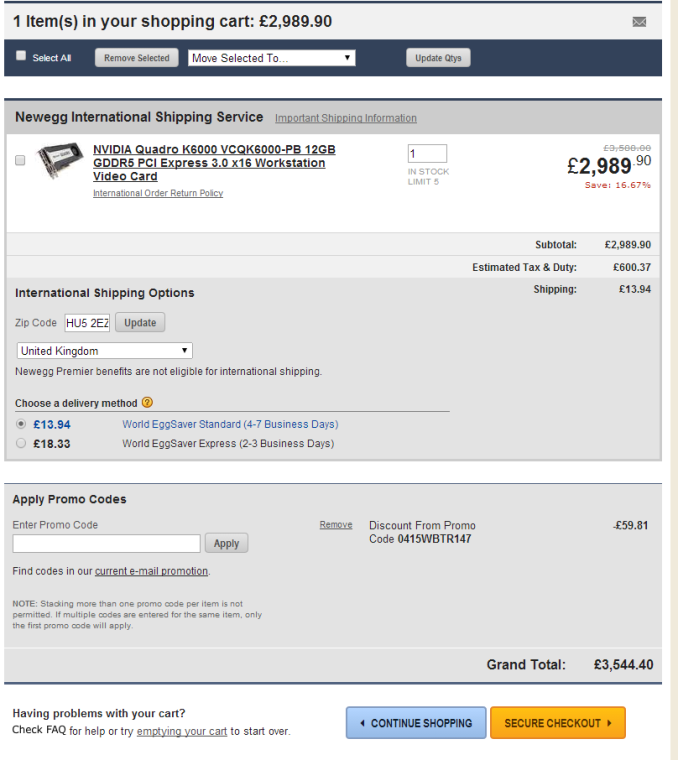


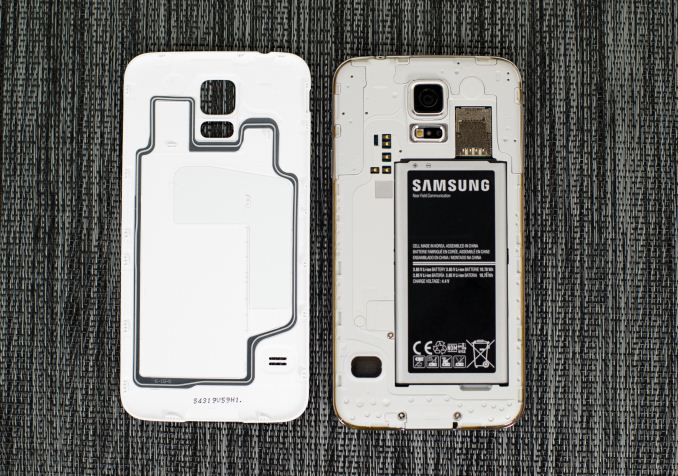
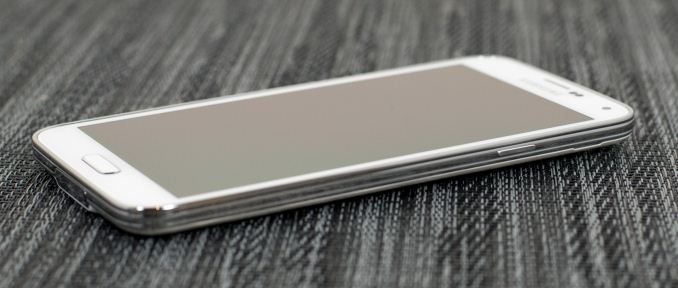

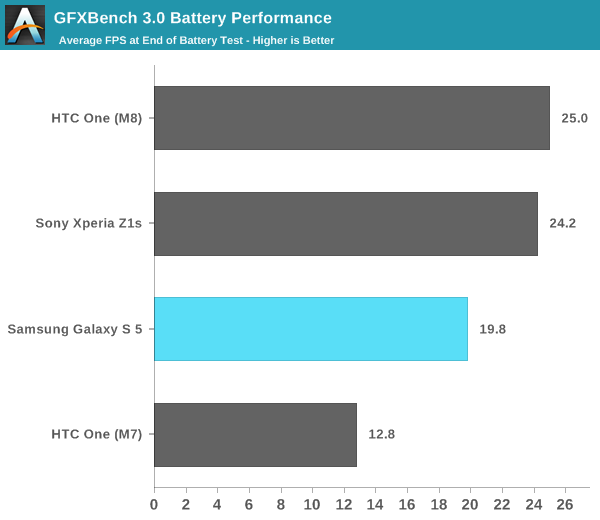
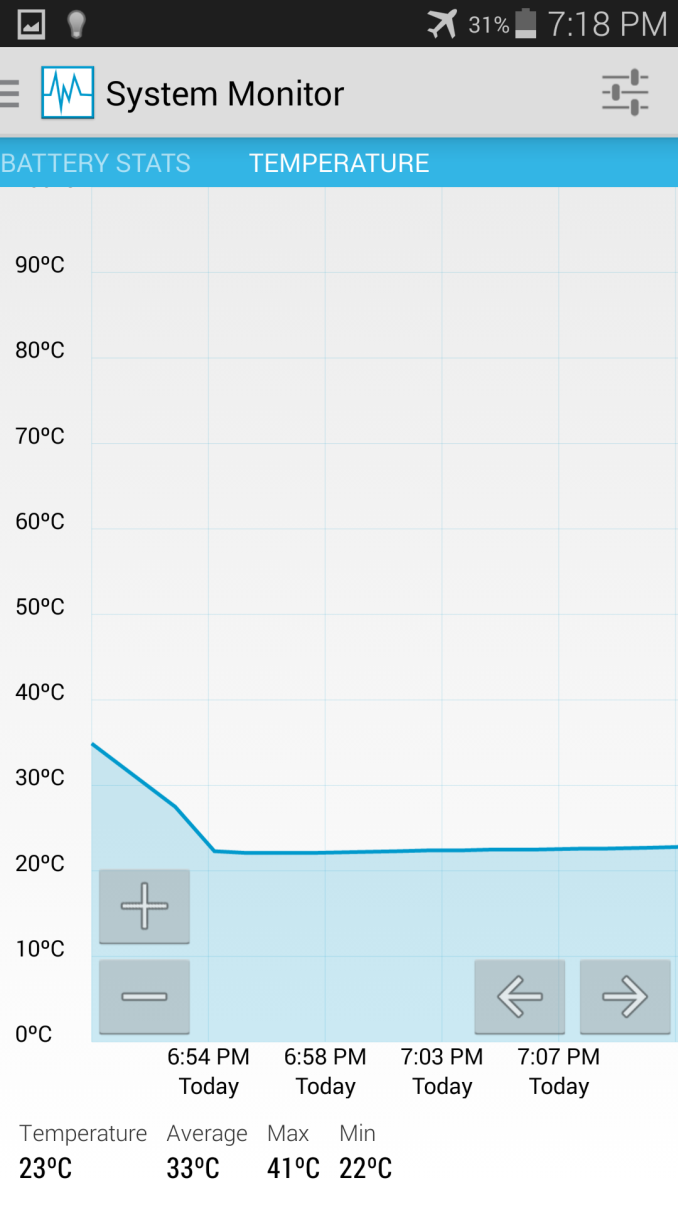
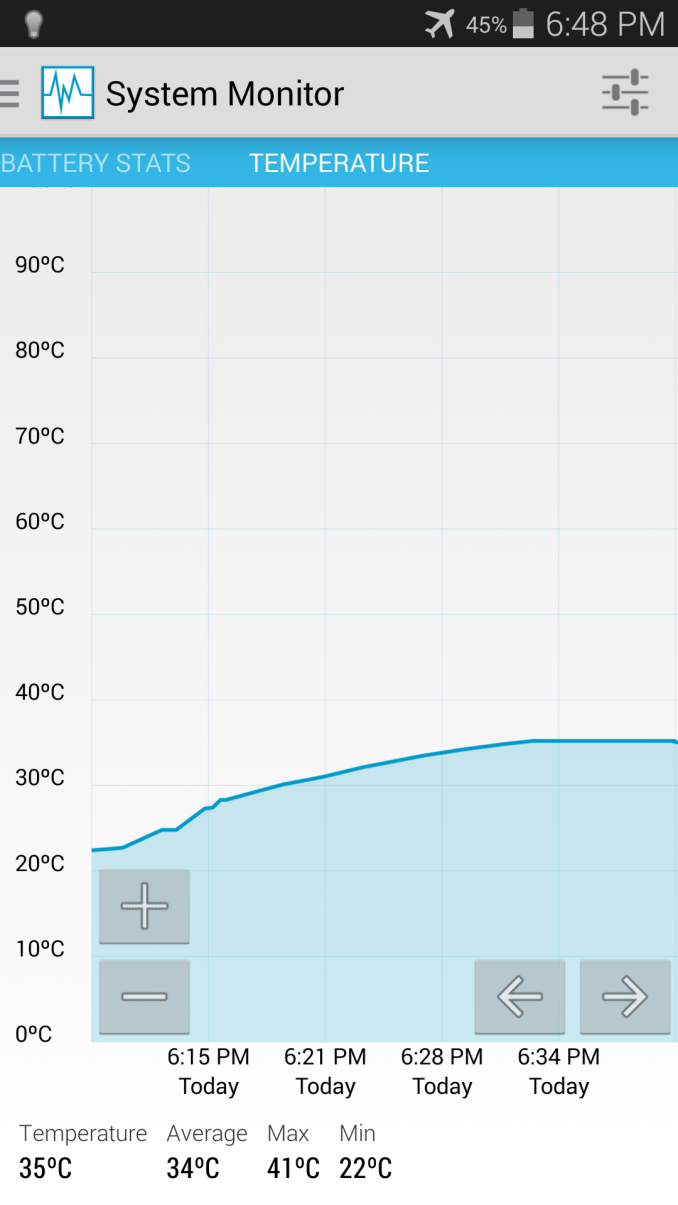
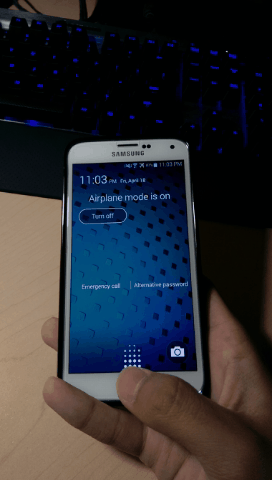


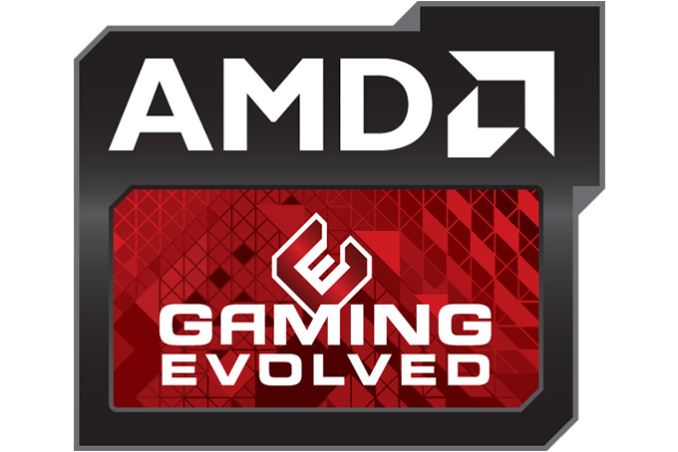




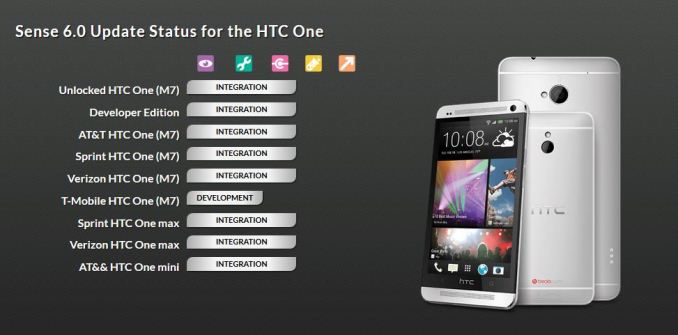
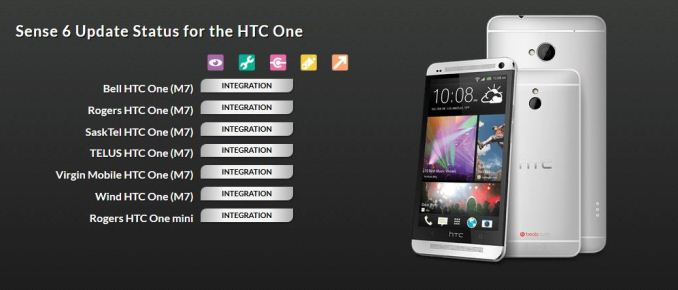


















Bookmarks